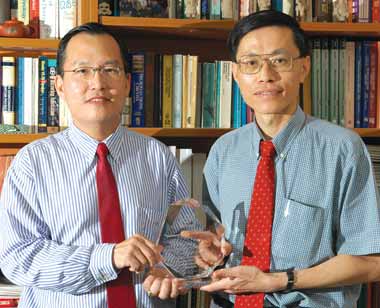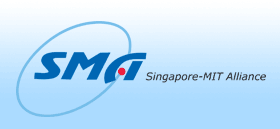Invention of data storage nets SMA Fellows NUSNNI Research Achievement Award
With 22 research labs set up throughout the NUS campus and over 120 faculty members involved in nanotechnology research, the NUS Nanoscience and Nanotechnology Initiative (NUSNNI) Award was set up to recognise the excellent research achievements of NUSNNI academic staff through journal publications or patent applications. Besides the quality and impact of the research, research achievement is also judged on the criteria of the extent of multi-disciplinary collaborations and the relevance of the projects to industry and commercial applications.
SMA Fellows, Associate Professors Choi Wee Kiong and Chim Wai Kin of NUS won the inaugural NUSNNI Research Achievement Award 2004 for their research achievements in work done by the Department of Electrical and Computer Engineering, NUS and SMA students. They were chosen, from among the shortlisted nominees by the NUSNNI’s International Advisory Panel, which comprises eminent academic and industry leaders in various research fields of Nanoscience and Nanotechnology, for their research in the synthesis and characterisation of germanium nanocrystal memory device structures.

Associate Professors Choi Wee Kiong and Chim Wai Kin with their award
Associate Professors Choi and Chim first proposed a memory device structure based on germanium (Ge) nanocrystals in year 2002. Since then, they have set up a research group that consists of NUS and SMA Ph.D. students. Professors Dimitri Antoniadis and Eugene Fitzgerald of MIT were invited to be collaborators and thesis advisors for this work. Dr Lap Chan of Chartered Semiconductor and Mr C. H. Tung as well as Dr A. Y. Du from the Institute of Microelectronics have also contributed to the project by providing TEM support and so on. The researchers focused on fundamental issues such as control of nanocrystal size and distribution, Ge penetration through the tunnel dielectric layer and annealing conditions. They also carried out quantum mechanical modelling and studied the charge storage mechanism of the memory devices. At the same time, they investigated charge storage, charge retention and issues affecting repeatability of device characteristics that have important implications on the realisation of nanotechnology in memory electronics. |


